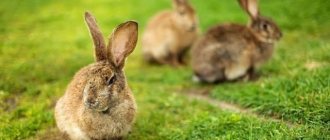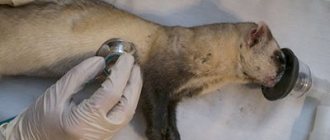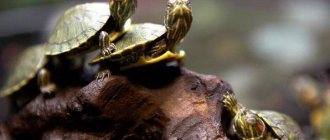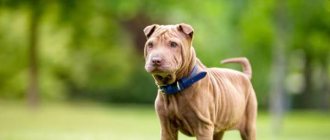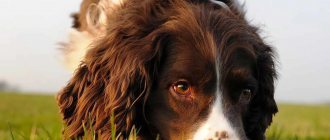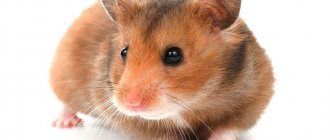How many years do decorative rabbits live at home? The lifespan of domestic fur-bearing animals depends on many factors, including belonging to a particular breed. This article will help you find out which decorative rabbits live longer and how to care for them to prolong their life.
Decorative rabbits
Lifespan of dwarf rabbits
Rabbits are kind, affectionate creatures. Keeping them at home brings joy to all family members. This begs the question: how long do dwarf rabbits live?
How long do dwarf rabbits live?
If you want to find a reliable friend for a long time in the form of a pet, you should carefully study the characteristics of individual breeds of these animals.
Lifespan
On average, these furry rodents live for about 6–8 years, but there are cases where pets have even lived up to 11 years. The exact lifespan of an animal depends on care and living conditions, so those who would like to extend the life of their pet should monitor the following factors:
- take an interest in the pedigree of a purebred animal, do not buy it from random sellers, otherwise genetic problems or simply health defects of the parents will make a particular individual insufficiently resistant to diseases;
- try to take care of the rabbit so that it does not get sick, also create conditions in which the risk of injury is minimized, but in case of any problems, immediately contact a veterinarian;
- choose the right menu for your pet and follow simple recommendations regarding its daily care;
- Remember that in nature a rabbit is an active animal, so provide it with opportunities for active walks.
Among other things, a certain part of the vital energy of any animal is spent on ensuring the reproductive instinct, and the inability to realize such a need when it exists shortens life expectancy.
Long-lived rabbits
In terms of average life expectancy, dwarf rabbits are not long-livers. Today, for pets to live 8 years is already a record. Most often, if all the rules for caring and feeding animals are followed, the animal lives no more than 6-7 years. But there are also exceptions. Several record holders even made it into the Guinness Book of Records. However, the oldest furry was not given the honor of getting there. In Scotland, according to some information, an eared dog lived in ordinary apartment conditions and died of old age only at the age of 24, but nothing is known about its breed.
Among the celebrities of the animal world recorded by representatives of the Book of Records, the most famous are the dwarf rabbits Do from the USA (died by the age of 17) and Floppy from England (died at the age of 19). It is very difficult to reach this age without certain genetic characteristics of individual breeds.
Pets
The decorative rabbit has the lowest life expectancy. And this will not change either the first-class content or the ideal nutrition. Mini eared animals are sensitive to diseases and physical influences, which reduces their vital activity. Basically, such an animal will not live more than 4-6 years. Some representatives are able to boast a longer life span.
The lion-headed ornamental animal can live up to 10 years, which is a decent age for such animals. Fold rams can boast of the same results, although the majority of them do not survive the 7-year mark; some individuals surpass the 10-11-year mark.
Decorative animals were bred from the meat breed of Rex rabbits, the name of the breed is mini-Rex. Such an eared animal generally breaks all longevity records among rabbits; it is able to live up to 12 years, which seems incredible in relation to the life expectancy of indoor animals.
Dwarf rabbits live significantly shorter lives than representatives of other breed groups. Their life expectancy is almost the same as that of universal meat-and-down breeds.
Conditions for longevity
The decorative rabbit is a creature with a delicate immune system, and few breeders can keep it in good condition. It is the state of health of animals that most often influences the fact that furry creatures leave this world just a few years after birth. To maximize the life of your pets, you should:
- undergo regular veterinary examinations and vaccinations;
- monitor the quality of the animal’s diet;
- take good care of it;
- castrate males;
- Organize daily walks for the animal.
Also, the life expectancy of domestic animals depends on:
- breeds;
- the health of the rabbit's parents;
- the presence or absence of genetic defects;
- predisposition to diseases.
Every experienced breeder knows how to determine whether a rabbit is old or not. Dwarf rabbits kept in regular home cages lose the sparkle in their eyes as they age. The quality of the coat also deteriorates: it begins to fade and thin out. The previously noticed activity and playfulness disappear. Often, in old age, eared cats become fat and develop a saggy belly. In addition, these animals are shy, and this is a serious problem. A rabbit may even die due to severe fright.
You should not feel sorry for your pet, fearing that castration will bring him a lot of pain and inconvenience. According to the results of numerous studies, operated males and females please their owners for several months longer than their full-fledged relatives. This difference is determined by the reduction in the risk of tumors of the genital organs, which are observed in these animals in at least 20% of cases. In addition, these data were obtained from a study of individuals who had previously undergone regular mating. Rabbits kept in home cages are most often deprived of this opportunity. This increases the risk of cancer.
Feeding
A typical rabbit diet includes a wide variety of foods. However, the owner should know which products can be harmful to the health of a furry animal.
Diet
When it comes to greenery, rabbits prefer the plants described below.
This:
- clover;
- lupine;
- peas;
- corn;
- oats
Animals also require vitamins. Their supply can be replenished with food.
Rich in vitamins:
- beet tops;
- carrot tops;
- pea stems;
- quinoa;
- herbs;
- cabbage leaves.
Harmful products
Do not overfeed rabbits with clover, food based on vegetables and fruits. Avoid eating fresh and raw grass. Dry it before giving it to your rabbit.
Poisonous plants are:
- aconite;
- quinoa;
- spurge;
- Melissa;
- wild radish;
- digitalis;
- lily of the valley;
- marsh horsetail;
- buttercup;
- sleep-grass;
- celandine;
- henbane;
- nightshade;
- hellebore;
- hemlock;
- lumbago;
- dope;
- horse sorrel.
You cannot feed your animal dairy products. Do not give him rice, rye, millet and sunflower seeds. Be careful with legumes and grains. Do not feed your pet baked goods or other similar foods that people eat. Food for other animals is also prohibited for consumption.
Vitamins
Sometimes rabbits don't get enough vitamins if their diet is not balanced or if they don't eat enough. In this case, you should resort to artificial vitamins. Rabbits need them, just like other living creatures. Products from which your pet can get the maximum vitamins are listed in the previous paragraph. Sometimes, instead of giving your rabbit vitamins, you just need to give him peas, the green part of carrots or beets.
But if the participation of artificial vitamins is necessary, then you need to start using them. But first, don't forget to consult your veterinarian.
A sign that your rabbit is lacking vitamin A will be dry eyes and a runny nose.
Due to a lack of vitamin C, the rabbit will often suffer from colds, and blood may also bleed from the gums. Reproductive dysfunction, problems with pregnancy and death of rabbits indicate a lack of vitamin E.
Fish oil, bone meal and milk will help compensate for the lack of vitamin D. These foods should be given to rabbits in a dark room, as direct light from the sun destroys the vitamin.
Which breeds live longer?
According to the results of many years of observations and reviews from the owners of eared sheep, the Lop-eared sheep lives the longest.
This breed has a higher life expectancy even without proper care. In the absence of serious genetic abnormalities, as well as acquired diseases, the individual lives up to 9 years. The Rex breed is considered a little less tenacious. Each of its representatives lives up to 5-7 years. Colored Dutch rabbits also have the same life expectancy.
How long does a rabbit, provided with everything it needs, live? What can a person expect who makes every effort to prolong the life of his pet? According to experts, pets can easily be kept for another 12-36 months to their average lifespan. Often the good attitude of the owner becomes the main criterion for the longevity of these pets. If an individual dies by the age of 13 or 14, all these years lived are the merit of the owner.
A wild animal lives much less than a domestic pet. And this is due to several factors. According to scientists, in 90% of cases, small rabbits live longer than their larger counterparts. In addition, how long a wild animal will live depends on natural factors, because lagomorphs prefer to spend most of their lives in burrows, which are occasionally flooded with groundwater. In addition to precipitation, there is a high risk of being eaten by a more formidable beast, so the life expectancy of wild rabbits is measured at 2-4 years.
Hermelin
Origin story.
These animals were bred in the 19th century, but appeared in Russia only recently. The first Hermelins were brought to the Moscow exhibition of miniature rabbits in 1998.
The Hermelin is often confused with its close relative, the Polish rabbit. Hermelins are rarely seen in Russia, but they are very popular in England.
Characteristic.
- The weight of these rabbits is about 1 kg.
- The color, according to the standards, is only pure white.
- The eyes must be either red or blue.
- Hermelines are short-haired (length - about 2 mm). The length of the ears is up to 7 cm.
Care.
You can bathe your rabbit no more than once a year. During the shedding period, be sure to comb once or twice a week.
Since hermelins often suffer from obesity, it is very important to properly balance their diet and calculate portions by grams
How long do decorative lop-eared rabbits live?
Fold rabbits have a playful nature, they are active and cute. They are loved by adults and children, because these animals easily find a common language with people and know how to show and accept tenderness. A characteristic feature of these animals is a compact, compact body, the back of which is widened, a flattened pretty face and drooping ears.
According to statistics, the average life expectancy of a rabbit with drooping ears is several years longer than that of pets with straight, erect ears. At home, with good care, they can live for about 8 years. This is the average. Some rabbits live up to 12-13 years.
Games
Almost all rabbits love to dig. This can be applied in the game. Give your rabbit a box filled with something that rustles and contains small pieces that he can rummage through. This way the animal will have somewhere to rummage.
You can also give him something to run after or something to roll over. It can be a light, large ball or sphere.
During games, the small animal needs to understand that it is not in danger. Sit next to him to make you appear smaller. This way the rabbit will understand that you are not a threat to him.
As a reward, you can give your pet something to eat that he really likes - a piece of his favorite food or a favorite vegetable. Don't forget to place food and water near the play area.
Do not restrain the animal by force. Let him go when he wants. Otherwise, the eared one may begin to kick and scratch. Make sure the items you use for gaming are safe.
How many years does a dwarf rabbit live?
Dwarf rabbit breeds are also in demand. These animals are distinguished by their good disposition, intelligence, and are trainable. Their advantage is compactness. The weight of a dwarf rabbit rarely exceeds 1.5 kilograms. Such pets can be kept even in a small apartment. Dwarf rabbits become attached to their owner and are easy to train, but their lifespan is not so long. On average, they live at home for 5-7 years, although cases of longevity have been recorded - some individuals can live up to 15 years.
Minilop
Minilop is a lop-eared rabbit. However, this breed's ears do not droop as much as those of Lambs. Babies are very reminiscent of a plush toy. The breed is quite difficult to breed. It is lightweight - up to 1.3 kilograms. The body of rabbits is quite massive, the head from the side looks like a ball. The color can be varied, the wool is thick and thick. Minilops are very playful and friendly animals, so they are quite popular among lovers of such animals.
Lion-headed individuals got their name for the specific growth of their fur.
What affects lifespan?
In the wild, rabbits rarely exceed the age threshold of 3 years, but domestic pets are luckier: they do not suffer from predators, eat well, and are less stressed. The lifespan of pets is influenced by various factors:
Rabbit being examined by a veterinarian
- Infections. Decorative rabbits have a very weak immune system. They can die in a matter of days from infectious diseases: myxomatosis, coccidiosis, VGBV, rhinitis and stomatitis.
- Traumatic factor. If a rabbit falls from a height, it can break its spine or damage its internal organs. It is important to ensure the safety of your pet to avoid an unfortunate death at an early age.
- Genetics. Just like human health, rabbits are affected by heredity. Healthy parents give birth to children with strong immunity. The same rule applies to animals.
- Nutrition. The diet of an eared animal must be properly balanced. A lack of nutrients, vitamins and microelements in the body always has a detrimental effect on health: vitamin deficiencies and various diseases develop, and immunity decreases.
- Hygiene. If a rabbit is kept in unsanitary conditions and neglected to clean the cage and disinfect it, there is a high probability of developing diseases.
- Stress. Decorative rabbits have a sensitive nervous system. Frightened, they may die from a broken heart. It is important to provide the animals with peace and avoid situations that could cause fear or shock. Loud sharp sounds, changes in environment, medical procedures, car trips - small animals are afraid of all this.
- Castration and sterilization. A rabbit will live several years longer if it is castrated at a young age. The same goes for female rabbits. Frequent bearing of offspring and feeding of cubs takes away the female's strength, and her body wears out faster. If you do not plan to purchase a pair for a decorative rabbit, you should think about castration.
Correct content
Dwarf creatures kept in normal cage conditions require regular walking.
Like other animals, they maintain their health by constantly being on the move. Keeping them in a cramped cage quickly leads to metabolic disturbances. The result is obesity and the appearance of signs of various diseases. In addition, under these conditions, the functioning of the animal’s internal organs begins to change, and the musculoskeletal system also suffers. Paw problems are one of the most common problems when keeping dwarf rabbits.
It is equally important to provide the rabbits with maximum comfort. It concerns not only amenities (bedding, feeders, cages, etc.), but also completely different factors. Dwarf creatures kept in normal apartment conditions must be protected from:
- bright light;
- falls from height;
- loud noise;
- other pets (cats, dogs, rodents, etc.).
The nervous system of these animals is unstable, so you need to try to protect it as much as possible from external threats. Most often, a rabbit is a toy in the hands of a child. This cannot be allowed. In such aggressive conditions for the rabbit, excessive timidity, as well as playing with children, often lead to the premature death of animals.
Those who want to have their own friend in the person of a dwarf rabbit must provide him with everything he needs. The animal quickly gets used to humans, but even over the years it never ceases to be afraid of them. It is very difficult to correct this situation. In addition, the threat from other stimuli does not allow the rabbit to completely relax.
Signs of old age
The owner will definitely notice age-related changes occurring in the pet. Young rabbits are playful and active, unlike older ones. They show interest in new toys, run around, play pranks, and can rarely be found at rest. When old age sets in, physical activity decreases. The animal spends most of its time lying down; it is difficult to interest it in games.
Reference. The character of the animal also changes over the years: an old rabbit quickly gets irritated and becomes capricious.
The appearance of yellow plaque on the teeth is a sign of an old rabbit.
There are other signs of aging, they relate to physiological changes:
- The appearance of yellow plaque on the teeth. A one-year-old pet’s teeth are already covered with a yellowish coating, and over the years they become even darker.
- Eyes. In older rabbits, the lenses become cloudy, and the eyelids become lumpy and dark spots appear on them.
- Stomach. The skin on the abdomen of an old rabbit sags.
- Wool. In young individuals, the fur is thick and shiny, but with age its appearance deteriorates - it thins out and looks unkempt.
Vaccination
After baby rabbits are weaned from their mother, their immunity begins to weaken. Vaccination is required to maintain it throughout their lives. The first vaccination is given at the age of one and a half months. After eight months, the vaccine stops working.
There is no point in vaccinating a sick animal. To prevent diseases, careful animal care is required. If any signs of illness appear, you should immediately consult a doctor and do not wait for complications. It’s better that you go to the vet in vain than miss the chance to save the animal’s life.
How long do decorative rabbits live at home?
Cute decorative rabbits are very popular not only with children, but also with many adult pet lovers. Rodents love to be played with, walked and treated affectionately. Cute pets are very interesting to watch. When purchasing an ornamental animal, many people wonder how many years do rabbits live? Everyone who dreams of having a furry pet at home wants to prolong the joy of communicating with him, which requires finding out his life expectancy and what conditions are necessary for him.
Upbringing
To prevent the long-eared pet from perceiving its owner as a threat, certain conditions must be met.
Here they are:
- Do not make sudden movements while near the animal. Slowly approach the cage.
- Avoid loud sounds and screams. Maintain peace and quiet when you are around.
- Don't hurt the animal.
- Let's smell your hands for him. He must remember your smell in order to recognize you later. This smell will be associated with safety.
- If your rabbit is afraid when you take him out of his cage, then know that he does not like to be bothered unnecessarily.
Factors affecting rabbit longevity
Zoologists studying the life expectancy of rabbits noticed that the longevity of an animal directly depends on the conditions of its detention . At home, with proper nutrition and good care, ornamental animals can live up to 10 years.
Wild lagomorphs live only about three years. Their high mortality rate is explained by unfavorable living conditions, predators and various diseases.
The lifespan of decorative rabbits at home depends on the following factors:
- Lifestyle. Active animals must constantly move, for which they need to be let out to run several times a day. The duration of the walk should be at least one hour.
- Care, maintenance and balanced feeding. Particular attention should be paid to the pet's nutrition, since they have a very delicate gastrointestinal tract. Dwarf rabbits are especially susceptible to various gastrointestinal diseases.
- Heredity. Many diseases are transmitted genetically, so when buying a pet you need to find out about the diseases of its parents.
- Colds and various injuries. When keeping decorative rabbits, you should protect them from drafts, monitor their movements and play very carefully so as not to injure the animal.
- Castration. Experts say that castrated animals live longer than breeding ones. This applies most of all to females, whose bodies are very worn out due to childbirth and feeding rabbits.
How to extend the life of a pet
Rabbits are not as easy to keep as they seem at first glance, and their longevity largely depends on how well you take care of the animal. Recommendations that will help improve your pet's life consist of several points.
Proper feeding
Ornamental rabbits need a diet high in fiber (cabbage, green grass, the above-ground part of some vegetables). They should always have hay in their cage, because animals can eat up to 40 times a day (this is how their digestive system works). You should treat yourself to fruit occasionally to prevent bloating. Rabbit diet products should be fresh and free of rot, and fresh grass should be slightly dried in the sun.
Cage conditions
Your pet's cage should be 5 times larger than the animal itself (this is a minimum). Do not forget that the animal should be allowed to roam freely around the house for several hours a day, and there should be no threats from other animals (dogs, cats). It’s better to make a small fence with the help of books or chairs, so you will be sure that the animal will not damage your furniture. The nursery should always be clean and dry. This is the main preventive measure against many diseases.
Veterinary assistance
Another reason rabbits live longer is an annual checkup with a veterinarian. It is also recommended to check the animal immediately after purchase. If there is the slightest suspicion of disease (most diseases can be determined by the appearance of the animal), then in addition to annual examinations, it is worth showing your pet during moments of illness.
Vaccination and neutering can also increase the lifespan of rabbits, as female rabbits are at high risk of developing uterine and mammary cancer.
Toys and mental stimulation
In order to raise a healthy and active pet, and it does not die prematurely from boredom, in addition to good nutrition and a comfortable cage, you need to provide the animal with intellectual development. Remember that animals compensate for the lack of your attention and communication by damaging the owner’s things.
Since decorative rabbits tend to get bored, you can make the following toys for them:
- A large cardboard box with pieces of paper or plastic balls. Hide your pet's favorite toy in it to satisfy his natural digging instinct.
- Ball with hay inside. Such a toy can be thrown on the floor so that the animal chases it around the room or hung on a string.
- Labyrinths. The rabbit will happily run through the maze, especially if a pleasant surprise awaits him at the end (for example, a slice of apple or pear).
- Cardboard castles with shelves and holes. This will be an active pastime for the animal.
- Wooden toys. The animal will willingly gnaw them and roll them from side to side.
- Old and unnecessary books and magazines. The baby will be happy to delve into the paper. But here you should remember that topographic paint is toxic, so do not chew the sheets.
Keeping your pet active will significantly extend its life. In addition, such hobbies will keep the owner’s furniture and personal belongings intact.
How many years do decorative rabbits live?
The lifespan of rodents also depends on what species the animal belongs to.
Decorative lop-eared rabbits
The most popular breed of rabbit is the Lop-Eared Ram. Its distinguishing feature is its ears, which are slightly larger than those of other breeds. These playful, gentle and very savvy animals are suitable for living at home. The whole family loves to tinker and play with them. The lifespan of decorative folds is about 7-8 years; castrated animals can live more than 8 years .
How long do dwarf rabbits live?
The cutest creatures are often adopted for children by choosing one of their favorite breeds. The following breeds of dwarf rabbits are suitable for home use:
- Dutch lop-eared rabbits. These are the smallest representatives of fold-eared breeds. They have a strong body, a small neck and a variegated, bluish-gray, light gray or lilac color.
- Japanese dwarf rabbits. Rodents have an unusual color. There are dark and yellow stripes scattered throughout their fur. In this case, the color of one side of the body may differ from the color of the other side.
- Hermelinas. The breed has thick, short, white fur and red or blue eyes.
- Dwarf Rex rabbits. The animals are distinguished from other breeds by their long ears, narrow head and “plush” fur. Their fur coat can be white, red, black or brown. Rabbits of this breed are not very beautiful at birth, but over time they become real cuties.
- Angora dwarf rabbits. The sight of these animals brings children into indescribable delight. The breed has luxurious fur, the length of which reaches 20 cm.
- Fox dwarf rabbits. The long-haired breed can be chinchilla, white-boned, white, agouti, blue or red. Pets of this breed need to be brushed regularly.
- Dwarf colored rabbits. These are not very docile animals that can sometimes be aggressive. Adult individuals weigh only one and a half kilograms and have a white, blue, black-fire, red, Siamese, white or red skin color.
- Dwarf rabbit Ram. Adult animals weigh no more than two kilograms. The breed is distinguished by funny ears that seem to form a horseshoe. These are very affectionate animals that you can buy for children.
Among all the listed breeds, it is not easy to find long-livers . The average lifespan of a dwarf pet can be about five years. Only a few individuals, which are considered long-livers, survive up to ten years.
Methods for determining gender
Once the rabbit reaches six months of age, even an inexperienced breeder will be able to determine whether it is a female or a male. To do this, a visual inspection is carried out based on primary and secondary signs.
The primary signs include the animal's genitals. The reproductive systems of females and males are different. In females, the genitals resemble a loop and a small tongue. The genitals are located close to the anus. In rabbits they are light pink in color. In adults, the genitals are dark pink.
The reproductive organs of males resemble a cylinder with a hole in appearance and are located further from the anus. In young animals the penis is light in color, in an adult male it is more pink and swollen. A characteristic feature of an adult male is the testicles. They are easily palpable and visible, resembling two small balls.
Secondary characteristics include: animal fur, mammary glands, body proportions, and shape of the skull. Puberty is also determined by the behavior of the rabbit. Males mark their territory with urine, which emits a characteristic odor that is not characteristic of females. Males mark the space with their scent. They rub against the cage, the feeder, trying to leave a reminder of themselves.
Breeds of the largest rabbits in the world and the weight of individuals from the Guinness Book of RecordsRead
Females are characterized by different behavior: they dig new burrows, equip their home, and improve living conditions in it. They can hide in secluded places. Female rabbits are distinguished by a more balanced character and calm behavior.
